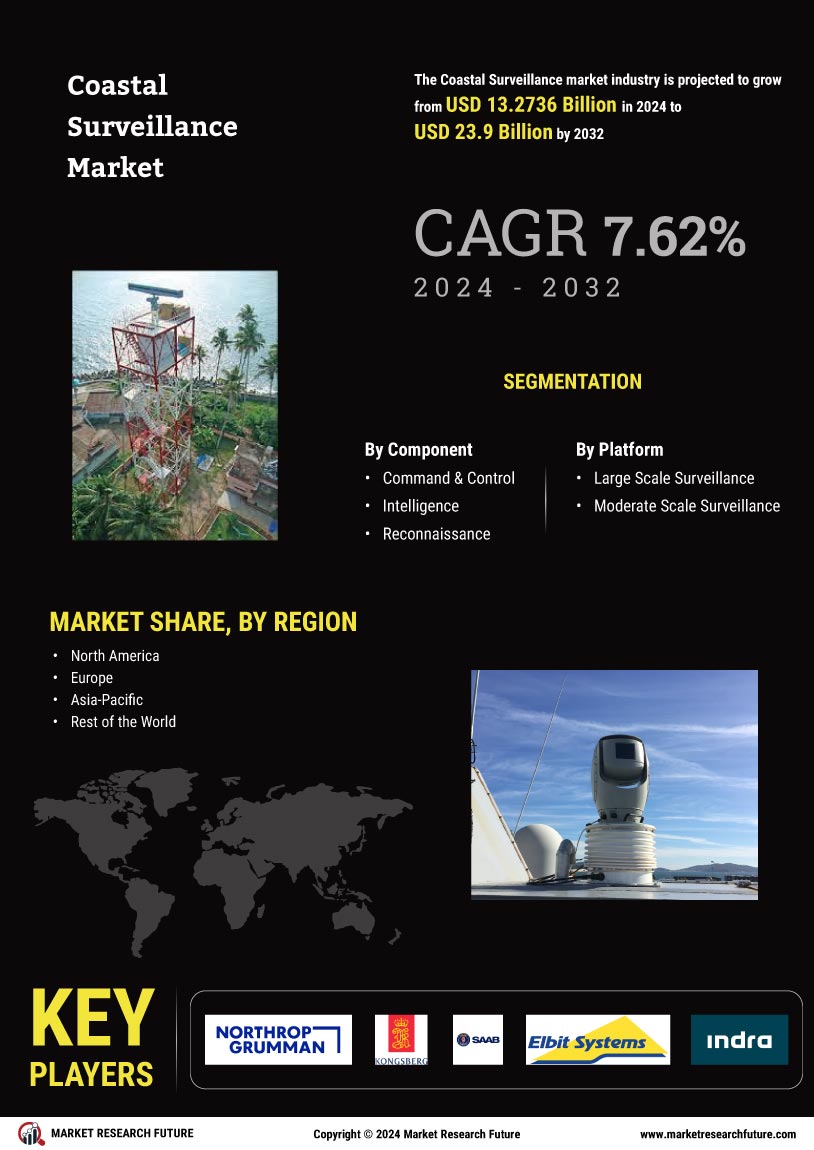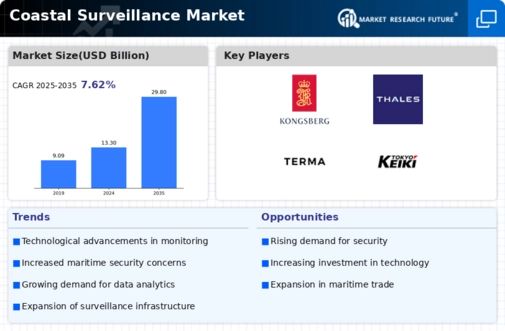The rise in the situational alertness to drive operations is driving the market growth
The two primary reasons that are anticipated to fuel the expansion of the coastal surveillance market during the projected period are the desire for a decrease in mission cycle time and the rise in situational alertness to drive operations. In addition, it is anticipated that as asymmetric warfare spreads, the market for coastal surveillance would expand. The coastal surveillance market is expected to see certain growth restraints due to the rising demand for submarine periscope and radar antenna detection by coastal surveillance centres.
The development of stealth technology, improved target tracking, and improved guidance paradigms in surveillance radar systems, however, may pose fresh challenges for the growth of the coastal surveillance industry in the near future.
Coastal surveillance systems are necessary for giving coast guards the most recent information on activity in coastal areas. Coastal surveillance systems give users complete control over a coastline area by precisely recognising, tracing, and identifying fast-moving, small targets that might penetrate an unmonitored coastal zone. Coastal surveillance systems enable total situational awareness from the shore, assisting in the prevention of unlawful acts and activities and safeguarding the environment, vital infrastructure, and marine life from any unauthorised entry.
Rising marine trade and commodities transit activities, as well as heightened awareness of maritime safety, are driving the industry. The industry is also growing as a result of increased security concerns, a dramatic increase in marine traffic, and maritime trade regulations. The implementation of several rules and regulations for enhanced marine security integration and regulation has also expanded the market share for coastal surveillance. Some of the major factors limiting this market's growth include high integration and maintenance costs, the rise of cyberwarfare and maritime terrorism, the trafficking of illegal weapons and chemicals, piracy, and other unconventional seaborne attacks.
The market for coastal surveillance may also experience significant growth as a result of technological improvements and the effective adoption of new technologies, such GPS-enabled smart containers. Additionally, it is predicted that many regions of the world's unregulated or underutilised water basins would present an alluring opportunity for coastal monitoring systems.
As coastal surveillance systems are utilised more frequently for activities including recording, policing, inspection, and boarding, the market is growing. Recorded radar video feeds are essential in legal conflicts, and recorded surveillance tracks are very helpful in tracing activities related to violations of environmental safety requirements at sea. Having access to recorded videos also makes it possible to identify patterns and illegal activities to find the concerned vessels. Asymmetric threats are a major concern for coastal security and offshore asset protection, which is fueling market expansion.
A sizable portion of the world's essential infrastructure, including as drilling rigs, floating LNG platforms, pipeline loading arms, and oil wells, are located offshore. Geospatial analytics are employed by coastal surveillance systems to do real-time data analysis to terminate any such engagements and avert substantial financial losses, which helps in the detection of asymmetric threats. Coastal surveillance systems can also recognise the mothership, keep an eye out for any illegal activity, record it on video, and provide the radar image in court. Thus, driving the Coastal Surveillance market revenue.
The increasing complexity of maritime threats and the need for enhanced situational awareness are driving advancements in coastal surveillance technologies, which are crucial for national security and environmental protection.
U.S. Department of Homeland Security
















Leave a Comment